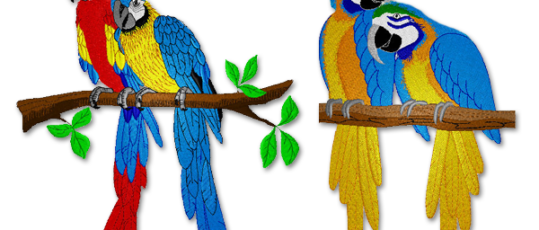Understanding the Embroidery Digitizing Refine: Your Ultimate Overview
Needlework digitizing is a meticulous craft that requires precision and experience to translate intricate layouts into digital formats for machine needlework. As craftsmens get started on this trip to grasp the needlework digitizing process, an extensive understanding of the fundamentals sets the foundation for excellence.

Recognizing Needlework Digitizing Essentials
Needlework digitizing essentials create the structure whereupon intricate designs are translated into machine-readable styles for specific sewing. This first action in the needlework digitizing process is important for making sure that the final embroidered product is a faithful depiction of the initial layout. Comprehending needlework digitizing essentials entails realizing vital principles such as stitch types, stitch direction, thickness, rug, and pull compensation.
Sew kinds play a crucial role in determining the aesthetic and textural end result of the stitched design. By selecting the appropriate stitch kind, whether it be satin, fill, or running stitch, digitizers can accomplish the preferred effect and boost the general high quality of the needlework. Additionally, stitch instructions affects the flow and measurement of the style, while density figures out the spacing and protection of the stitches.
Furthermore, padding stitching provides security to the design by safeguarding the material and preventing distortion throughout the embroidery procedure. Pull settlement is one more important factor to consider to combat the natural tendency of material to contract when sewn. Mastering these embroidery digitizing essentials is essential for developing professional-quality embroidered items.
Picking the Right Digitizing Software
Choosing the ideal digitizing software program is a vital choice that considerably affects the performance and top quality of the embroidery digitizing process. Digitizing for Embroidery. When selecting the ideal digitizing software program, it is important to think about variables such as the intricacy of designs you intend to produce, the user-friendliness of the software, the degree of consumer assistance supplied, and the compatibility with your needlework machine
There are various digitizing software application choices offered in the marketplace, varying from standard programs for beginners to advanced software for professional digitizers. Some preferred choices include Wilcom EmbroideryStudio, Hatch Embroidery Software, and PulseID. These software offer a variety of devices and attributes to aid you develop detailed layouts effortlessly.
Prior to making a decision, it is advisable to explore the various software program choices with totally free trials or trials to establish which one finest fits your needs. In addition, reviewing reviews and looking for referrals from knowledgeable digitizers can offer important insights right into the staminas and weaknesses of each software (Digitizing for Embroidery). By thoroughly evaluating your demands and contrasting the features of various digitizing software application, you can make an informed selection that improves your needlework digitizing process
Digitizing Tools and Methods

Optimizing Layout Setup for Needlework
Understanding the ins and outs of style setups is essential in accomplishing optimum cause the needlework digitizing procedure, structure upon the foundation laid by comprehending digitizing devices and methods. When enhancing style setups for needlework, it is important to think about variables such as stitch type, thickness, underlay, pull settlement, and enrollment. Stitch type option impacts the total look of the style, with alternatives like satin, fill, and helpful site running stitches more information providing different appearances and results. Thickness refers to the spacing and density of stitches, influencing the layout's protection and toughness. Appropriate underlay sewing supplies stability and protects against material distortion, particularly for complex styles or on stretchy products. Pull settlement readjusts for textile stretch during sewing, making sure accurate layout replication. Enrollment settings straighten various elements of the style accurately, keeping general layout stability. By fine-tuning these design setups, embroiderers can improve the quality and precision of their stitched developments.

Troubleshooting Common Digitizing Issues
When running into typical digitizing concerns during the needlework process, it is vital to comprehend the source and carry out effective solutions without delay. One typical trouble is stitch density concerns, where stitches might be too dense, creating the fabric to pucker, or as well thin, resulting in voids in the layout. Changing the stitch thickness setups in the digitizing software can assist resolve this problem.
Another constant difficulty is thread breaks throughout the needlework procedure. This can happen as a result of various reasons such as wrong tension settings, plain needles, or utilizing low-grade thread. Ensuring correct upkeep of the embroidery machine, including regular needle adjustments and tension changes, can lessen the event of thread breaks.
Moreover, design registration mistakes can cause misaligned aspects within the needlework design. read this article Inspecting the design placement in the digitizing software application and making needed changes before stitching can help in avoiding this problem. By addressing these common digitizing issues without delay and efficiently, you can ensure a smoother embroidery process and top notch completed products.
Verdict
Finally, understanding the needlework digitizing procedure calls for a strong understanding of the basics, the right choice of software program, and expertise of tools and methods. Maximizing layout settings and fixing usual digitizing problems are critical action in ensuring premium needlework results. By complying with these actions carefully, one can attain accuracy and performance in the digitizing process.